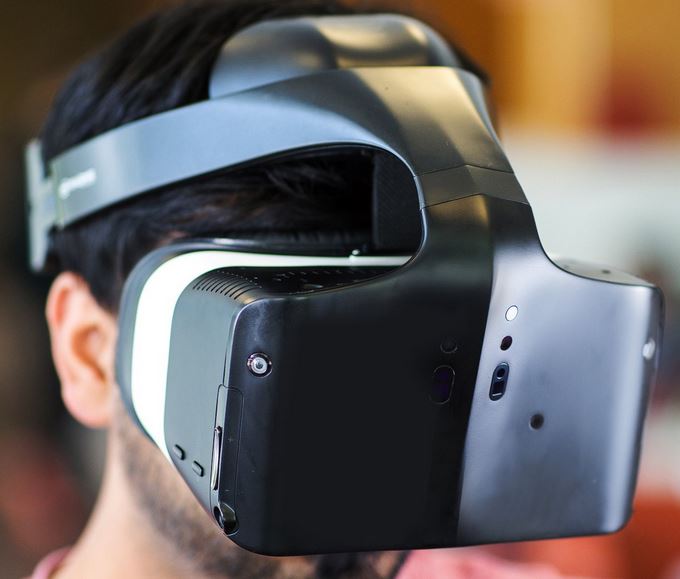Microsoft's Immersive Augmented Reality initiative dealt another blow with Project Alloy cancellation
3 min. read
Published on
Read our disclosure page to find out how can you help MSPoweruser sustain the editorial team Read more

Today Intel confirmed that their Project Alloy “merged reality” initiative is dead, apparently shelved due to lack of interest from OEMs.
What many appear to have forgotten is that Project Alloy was actually a Wintel initiative, and that it would have fallen somewhere along Microsoft’s Mixed Reality spectrum, closer to the new Windows Mixed Reality VR headsets coming this Holiday season, but also including a lot of features of Microsoft’s HoloLens, such as being able to sense the environment.
It would also have run on Microsoft’s then Windows Holographic platform, now renamed Windows Mixed Reality.
Unlike HoloLens, which overlays digital objects in your very real field of view, Project Alloy provides a fully immersive digital experience like VR, but would use Project Tango depth-sensing technology to add real objects into your digital field of view, sometimes transforming them. This would, for example, allow users to play a fully immersive VR game while still being able to run around their home fully untethered, while obstacles like sofas would be transformed into crates for example.
Project Alloy was to be a reference design for OEMs to turn into real products, and last we heard in January this year the headsets were still on track for Q4 2017. At a presentation, at CES 2017 Intel CEO Brian Krzanich announced that the project is going well and that the company was planning to productize the headset with OEM partners by the last quarter of the year.
Now in their statement, Intel confirmed it had chosen to “wind down its Project Alloy reference design,” but said it would continue to invest in augmented and virtual reality technology, including RealSense depth sensing and WiGig-based wireless headset systems.
“Alloy served as a great proof of concept for Intel and the industry — showing what’s possible in a high-performance, immersive and untethered VR experience,” they continued. “What we’ve learned through Project Alloy will inform future efforts.”
Analysts had predicted that the marriage of Microsoft and Intel’s mixed reality efforts would bring VR to mainstream acceptance and lead to the creating of a large VR ecosystem.
In 2016 Jack Gold of IT analyst company J.Gold Associates said:
I expect this announcement will energize the world of VR over the next 2-3 years and create a burgeoning marketplace. This will force early device makers (e.g., Oculus, Epson) to pivot over the next 1-2 years, as proprietary designs will capture a limited market relegated to specialty solutions.
Conversely, today’s news signals poorly for immersive (ie not phone-based) augmented reality, which appears dogged by the lack of maturity of the technology, with current solutions being expensive and bulky. It seems it may indeed be a few more years before the technology is ready for the actual market.









User forum
0 messages